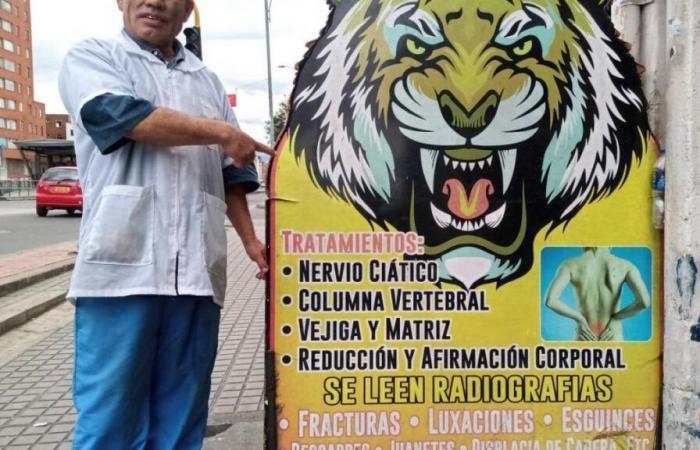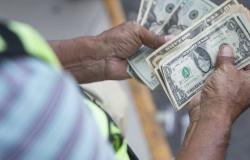last year, 11.5 percent of the Colombian population (6 million citizens) were in multidimensional poverty, according to the most recent data of the Multidimensional Poverty (IPM) indicator of the DANE, published this week. And although the report is positive in almost all aspects – since the incidence rate was reduced by 0.6 percentage points with respect to 2023 -, the great mole is the situation of access to Health.
While multidimensional poverty decreased, health access barriers grew. Photo:OSCAR BERNAL / THE time
Read too
Of the 15 indicators that make up the IPM, the only one that registered an increase was that of ‘Barriers to access to health services’, with a variation of 1.1 percent, going from 1.8 % in 2023 to 2.9 % of homes that experienced this deprivation in 2024. According to the DANE report “this variation is statistically significant.” The barriers are greater in the departments of Antioquia, Córdoba, Boyacá, Bogotá, Tolima, Cauca, Nariño, Amazonas, Vaupés, Guaviare and Guainía.
In 2024, in addition, the number of people in poverty that became ill. According to the report, 2.2 million citizens claimed to have suffered a condition last year, compared to the 1.6 million who said the same in 2023. However, the most serious thing is that, of those people who said they were sick, much less decided to treat their symptoms through the health system. Instead, the number of patients who resorted to private medical services increased, they were self -medicated or consulted to a healer or yerbatero.
According to the figures, of the more than two million Colombians who said they were sick last year, 63.4 % decided to go to a health provider institution through the Social Security System; A fall compared to 2023, when 68 % of citizens attended an IPS to treat their symptoms. In contrast, there was a 16.5 % increase in the number of people who decided to consult with doctors or health experts in a particular way.
Private medical consultations increased by 16.5 %. Photo:stock
There were also increases in the use of non -traditional mechanisms, because the number of consultations with healers, grasslands and midwives grew by 148.9 %. Alternative therapies such as acupuncture, floral essences, music therapies and homeopathy also saw an important increase, with a 90 % growth in the number of Colombians who attended this type of treatments.
Read too

But, without a doubt, the most serious were the increases in self -medication, the consumption of home remedies and in the decision not to treat the disease. The percentage of citizens in multidimensional poverty who used home remedies in 2024 grew by 84.9 % compared to 2023; while those who self -recipe treatments grew by 97.5 %. Finally, those who decided not to do anything increased by 80.7 %.
The consumption of home remedies to treat diseases also grew. Photo:stock
-The president of ACEMI, Ana María Vesga, described the IPM figures as “serious”, because in her concept the crisis of the system would be “impoverishing Colombians”, and affecting their ability to access their right to health, especially if one takes into account that this indicator was one of the ones that most helped to reduce poverty.
“Until 2023 health was the policy that contributed the most to the reduction of multidimensional poverty and inequality. Another indicator that is reversed, as well as the increase in pocket expense, the low vaccination rate or the reappearance of diseases that we thought we thought were overcome. It is urgent to design a route to recover the path, make the required adjustments and offer solutions to patients and the support of the system and their agents”, Said the directive.
With this analysis, the executive director of the Plural Citizen Participation Group, Cristina Isaza, who added that what Dane data is a setback of the country in the Public Health Service, because the increase of almost 150 percent in consultations with healers and yerbateros is a reflection of “sanitary exclusion” and the “despair of citizenship” that would be losing real and appropriate access to the real and time formal.
“The right to health is not only to have an EPS, nor is it only a constitutional principle. It is having effective access to a timely diagnosis and safe treatment. When patients self -medicate or resort to home remedies because there are no alternatives, the State has failed. This not only violates the right to quality care, but increases the risks of complications, adverse effects, prolonged or poorly treated diseases. In a greater number of avoidable deaths and in the standardization of precariousness in health as the only alternative for millions, ”said the expert.
In the long term, this informalization can lead to a greater number of avoidable deaths and in the normalization of precariousness in health as the only alternative for millions
Cristina IsazaExecutive Director of the Plural Citizen Participation Group
Read too

For its part, the doctor and Ph.D. In policies and public health, Ramón Abel Castaño, warns that, if so, more and more homes will be faced with the situation in which health becomes a factor that prevents them from getting out of poverty. The increase in pocket spending and the least access to treatments through the health system could lead to people living similar situations to those experienced in other countries during the emergency of COVID-19, when millions of people had to borrow to receive medical care, something that did not happen in Colombia.
“Health is one of the great poverty generators, both for the lack of access to health and for the expense that homes must do. In fact, during the pandemic, and this is something that we have insisted the defenders of the current system, no home in Colombia had to sell its productive assets or fixed goods, such as their home, nor borrow to pay the hospital account. That happened in all countries in the region, but not in Colombia. Therefore, health in Colombia was one of the elements that most contributed to the reduction of inequities and the multidimensional poverty index, ”added Castaño.
Edwin Caicedo
Environment and Health Journalist
@Caicedoucros







